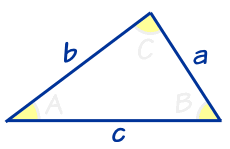
Trigonometry ... is all about triangles.
 | Trigonometry ... is all about triangles. |
Right Angled Triangle
A right-angled triangle (the right angle is shown by the little box in the corner) has names for each side:
| 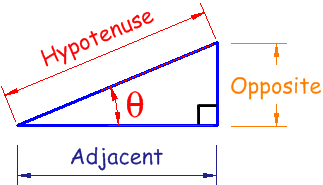 |
Angles
Angles (such as the angle "θ" above) can be in Degrees or Radians. Here are some examples:
| Angle | Degrees | Radians |
|---|---|---|
| 90° | π/2 | |
| __ Straight Angle | 180° | π |
| 360° | 2π |
"Sine, Cosine and Tangent"
The three most common functions in trigonometry are Sine, Cosine and Tangent. You will use them a lot!
They are simply one side of a triangle divided by another.
For any angle "θ":
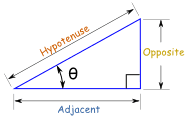 |
|
Example: What is the sine of 35°?
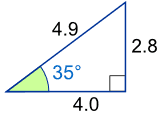 | Using this triangle (lengths are only to one decimal place): sin(35°) = Opposite / Hypotenuse = 2.8/4.9 = 0.57... |
Sine, Cosine and Tangent are often abbreivated to sin, cos and tan.
| Try It!Have a try! Drag the corner around to see how different angles affect sine, cosine and tangent And you will also see why trigonometry is also about circles! Notice that the sides can be positive or negative according to the rules ofcartesian coordinates. This makes the sine, cosine and tangent vary between positive and negative also. |
Unit CircleWhat we have just been playing with is the Unit Circle. It is just a circle with a radius of 1 with its center at 0. Because the radius is 1, it is easy to measure sine, cosine and tangent. | 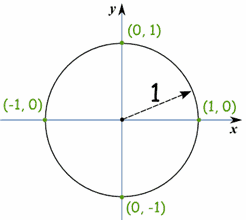 |
Here you can see the sine function being made by the unit circle:
 |
You can see the nice graphs made by sine, cosine and tangent.
Repeating Pattern
Because the angle is rotating around and around the circle the Sine, Cosine and Tangent functions repeat once every full rotation.
When you need to calculate the function for an angle larger than a full rotation of 2π (360°) just subtract as many full rotations as you need to bring it back below 2π (360°):
Example: what is the cosine of 370°?
370° is greater than 360° so let us subtract 360°
370° - 360° = 10°
cos(370°) = cos(10°) = 0.985 (to 3 decimal places)
Likewise if the angle is less than zero, just add full rotations.
Example: what is the sine of -3 radians?
-3 is less than 0 so let us add 2π radians
-3 + 2π = -3 + 6.283 = 3.283 radians
sin(-3) = sin(3.283) = -0.141 (to 3 decimal places)
Solving Triangles
A big part of Trigonometry is Solving Triangles. By "solving" I mean finding missing sides and angles.
Example: Find the Missing Angle "C"
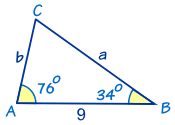
It's easy to find angle C by using angles of a triangle add to 180°:
So C = 180° - 76° - 34° = 70°
It is also possible to find missing side lengths and more. The general rule is:
See Solving Triangles for more details.
Other Functions (Cotangent, Secant, Cosecant)
Similar to Sine, Cosine and Tangent, there are three other trigonometric functions which are made by dividing one side by another:
 |
|
Trigonometric and Triangle Identities
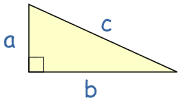 | The Trigonometric Identities are equations that are true for allright-angled triangles. |
 | The Triangle Identities are equations that are true for all triangles (they don't have to have a right angle). |
ไม่มีความคิดเห็น:
แสดงความคิดเห็น